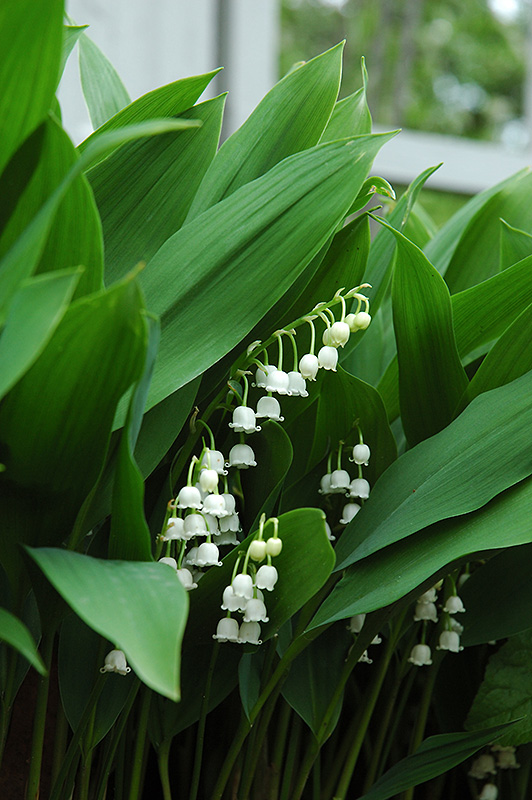Height: 6 inches
Spread: 23 inches
Sunlight:
![]()
![]()
Hardiness Zone: 3a
Ornamental Features
Lily-Of-The-Valley features subtle racemes of lightly-scented white bell-shaped flowers rising above the foliage from mid to late spring. Its pointy leaves remain green in colour throughout the season.
Landscape Attributes
Lily-Of-The-Valley is an herbaceous perennial with a ground-hugging habit of growth. Its medium texture blends into the garden, but can always be balanced by a couple of finer or coarser plants for an effective composition.
This is a high maintenance plant that will require regular care and upkeep, and is best cleaned up in early spring before it resumes active growth for the season. Deer don't particularly care for this plant and will usually leave it alone in favor of tastier treats. Gardeners should be aware of the following characteristic(s) that may warrant special consideration;
- Invasive
Lily-Of-The-Valley is recommended for the following landscape applications;
- Groundcover
- Naturalizing And Woodland Gardens
Planting & Growing
Lily-Of-The-Valley will grow to be only 6 inches tall at maturity, with a spread of 23 inches. Its foliage tends to remain low and dense right to the ground. It grows at a medium rate, and under ideal conditions can be expected to live for approximately 10 years. As an herbaceous perennial, this plant will usually die back to the crown each winter, and will regrow from the base each spring. Be careful not to disturb the crown in late winter when it may not be readily seen!
This plant does best in partial shade to shade. It prefers to grow in average to moist conditions, and shouldn't be allowed to dry out. It is not particular as to soil type or pH. It is highly tolerant of urban pollution and will even thrive in inner city environments, and will benefit from being planted in a relatively sheltered location. This species is not originally from North America, and parts of it are known to be toxic to humans and animals, so care should be exercised in planting it around children and pets. It can be propagated by division.


